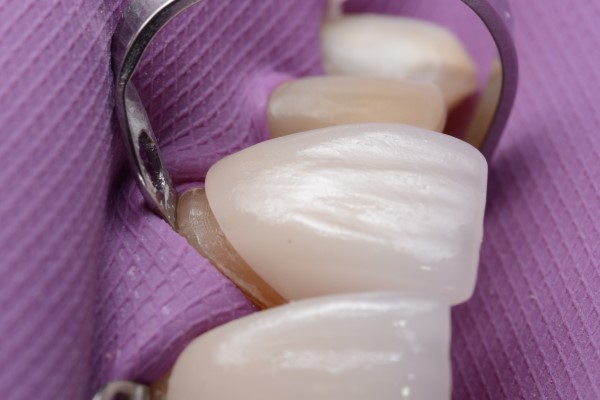How Long Will Invisalign Aligner Therapy Last?

Invisalign® is a dental treatment that involves using clear plastic aligners to correct misaligned teeth without the need for uncomfortable metal braces. How long should patients wear? There are several factors to consider when choosing how long you'll wear your aligners, including your age, the severity of your misalignment, and how flexible you are with scheduling appointments.
What is the average length of time a patient wears Invisalign?
It all depends on your case. In general, patients wear their aligners full-time for about two weeks, followed by a week of flossing before progressing to their next set of aligners. How long you wear your aligners is up to you and your dentist. Most people wear their aligners about 22 hours per day while working toward their goals. Some patients, however, choose to sleep in them; others only use them when they eat or drink acidic foods or beverages that can erode teeth and harm dental work if not properly protected with tooth-colored plastic.
Factors affecting the length of treatment
The length of time that a patient will have to wear Invisalign is dependent on several factors, including size and number of teeth being treated, the severity of crowding, degree of protrusion or rotation, amount of space between teeth before treatment begins, age, and whether there are other dental issues present. You should work with your dentist to determine your personal goals for treatment and then calculate your predicted length based on these standards.
Teeth are usually completely moved into their final position within 6 to 15 months. The average amount of time spent in treatment is 11 months. While most cases are completed within 12 to 18 months, it's not uncommon for patients to need 24 or even 36 months to correct issues that cannot be resolved in less time. On average, 5 percent of patients need more than 18 months in braces, while about 1 percent require more than 24 months.
What does your dentist want you to know about wearing your aligners 24/7?
You should always wear your aligners except when eating, drinking, brushing, and flossing. Your dentist may have you remove your aligners to clean them, so you'll need to have a set of backup trays available. When wearing your aligners full-time for two weeks straight without removing them, you'll be able to see your teeth in their new positions.
You may not be able to see your teeth move right away. The process of moving your teeth into alignment can take up to three months, though it could take longer for people with large gaps between their teeth or significant dental work. Your dentist should be keeping an eye on your progress and let you know when to schedule your next visit so they can check your progress and apply additional pressure if necessary.
Don't forget about regular visits at least every four weeks so they can check for any signs of damage or difficulty in aligning your teeth. You'll also need to have an X-ray taken at some point during treatment to ensure that no damage has occurred during invisalign treatment, which might require special solutions or adjustments before proceeding further.
Request an appointment here: https://www.houstonpersonaldentist.com or call Jeff Tollett, DDS at (713) 481-3045 for an appointment in our Houston office.
Check out what others are saying about our dental services on Yelp: Invisalign in Houston, TX.
Recent Posts
Invisalign® has become the standard for teeth straightening treatment due to the ease of the process and the many benefits it offers. Unlike traditional approaches such as braces, Invisalign® allows individuals to undergo an easy and flexible treatment process that also allows for discreetness! A common question that arises when considering Invisalign® is how long the actual treatment…
Are you thinking about getting Invisalign and wondering: Does Invisalign really work? Invisalign® is one of the most popular forms of clear aligner treatment. However, determining whether or not Invisalign really works is important if you are considering treatment. A common question is whether Invisalign causes any tooth problems, and we seek to answer that…
Treating crooked teeth does not just improve your smile's appearance; it can also improve your dental health. Clear braces can straighten teeth, offering numerous benefits: Lower risks of tooth decay Lower risks of gum disease Decreased tooth or jaw pain Improved digestion Improved speechEven though they do not utilize traditional wires, brackets, and bands, clear…
Treating crooked teeth does not just improve your smile's appearance; it can also improve your dental health. Clear braces can straighten teeth, offering numerous benefits: Lower risks of tooth decay Lower risks of gum disease Decreased tooth or jaw pain Improved digestion Improved speechEven though they do not utilize traditional wires, brackets, and bands, clear…


